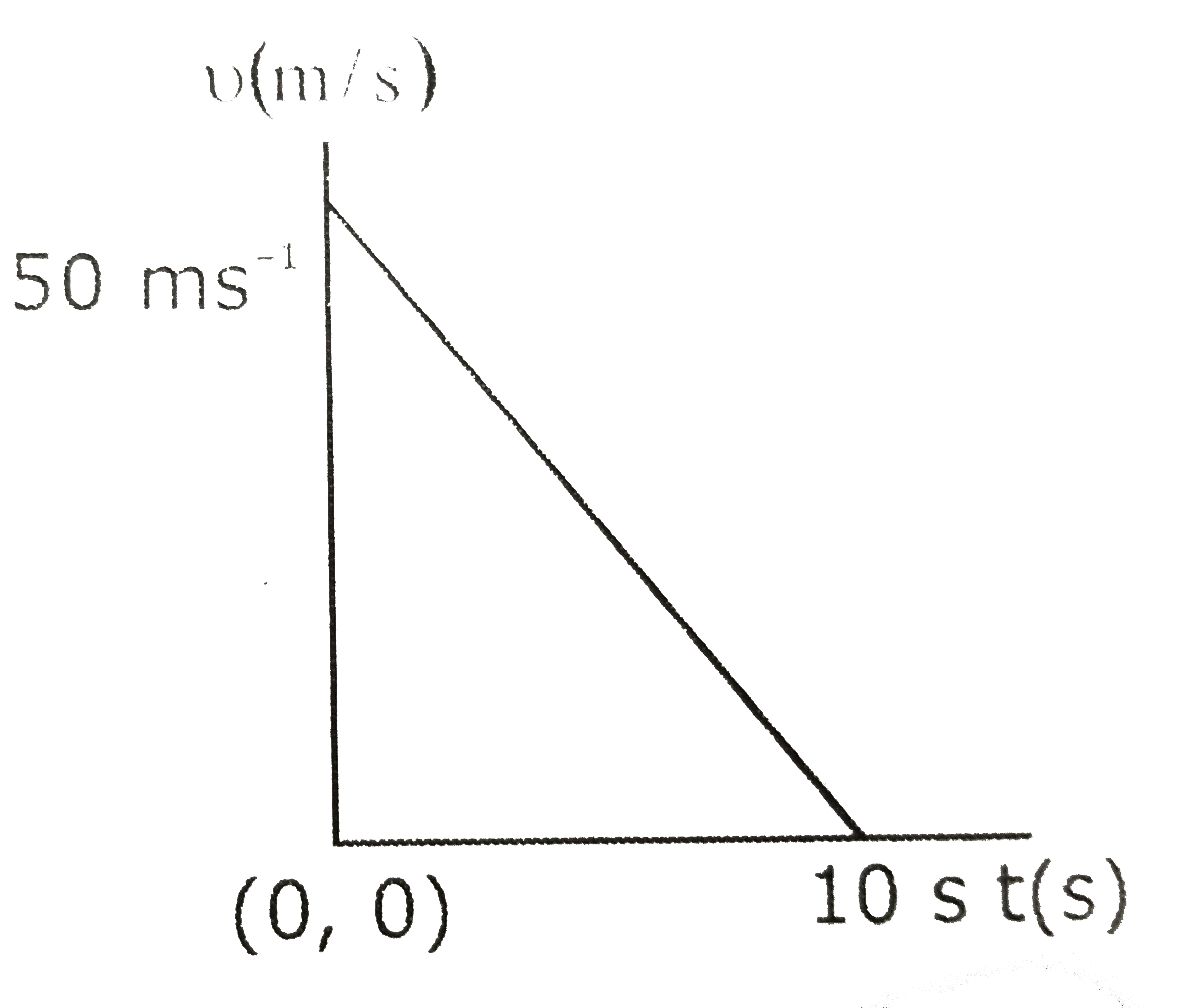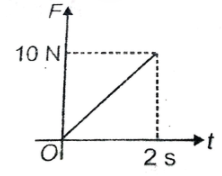A force given by the relation F=8t, acts on a body of mass 2kg, initialiy at rest. Find the work done by this force on the body during first 2 seconds of its motion.
64J
zero
−64J
none of these
To solve the problem of finding the work done by the force F=8t on a body of mass 2kg during the first 2 seconds of its motion, we can follow these steps:
Step 1: Determine the acceleration of the body
The force acting on the body is given by:
F=8t
Using Newton's second law, the acceleration a can be calculated as:
a=Fm
Substituting the values:
a=8t2=4tm/s2
Step 2: Find the velocity as a function of time
To find the velocity v, we need to integrate the acceleration with respect to time:
dvdt=4t
Integrating both sides from t=0 to t=2:
∫v0dv=∫204tdt
Calculating the right side:
v=4⋅t22∣∣∣20=2t2∣∣∣20=2(22)−2(02)=2(4)=8m/s
Step 3: Calculate the work done using the change in kinetic energy
The work done by the force is equal to the change in kinetic energy. The initial kinetic energy KEi is 0 (since the body is initially at rest), and the final kinetic energy KEf is given by:
KEf=12mv2
Substituting the values:
KEf=12⋅2⋅(8)2=1⋅64=64J
Thus, the work done W is:
W=KEf−KEi=64−0=64J
Final Answer
The work done by the force on the body during the first 2 seconds of its motion is 64J.
---
The force acting on the body is given by:
F=8t
Using Newton's second law, the acceleration a can be calculated as:
a=Fm
Substituting the values:
a=8t2=4tm/s2
To find the velocity v, we need to integrate the acceleration with respect to time:
dvdt=4t
Integrating both sides from t=0 to t=2:
∫v0dv=∫204tdt
Calculating the right side:
v=4⋅t22∣∣∣20=2t2∣∣∣20=2(22)−2(02)=2(4)=8m/s
The work done by the force is equal to the change in kinetic energy. The initial kinetic energy KEi is 0 (since the body is initially at rest), and the final kinetic energy KEf is given by:
KEf=12mv2
Substituting the values:
KEf=12⋅2⋅(8)2=1⋅64=64J
Thus, the work done W is:
W=KEf−KEi=64−0=64J
The work done by the force on the body during the first 2 seconds of its motion is 64J.
Topper's Solved these Questions
Similar Questions
A force of 10 N acts on a body of mass 2 kg for 3s , initially at rest. Calculate change in momentum of the body.
View SolutionA force of 10 N acts on a body of mass 2 kg for 3s , initially at rest. Calculate the velocity acquired by the body
View SolutionIf a body of mass 5 kg initially at rest is acted upon by a force of 50 dyne for 3s, then the impulse will be
View SolutionVelocity -time graph for a body of mass 10 kg is shown in figure. Work -done on the body in first two seconds of the motion is :
 View Solution
View SolutionA variable force acts on a body of mass 2 kg intially at rest as shown in figure . Calculate the impulse of the force in first 2 seconds and speed of the body after 2 seconds .
 View Solution
View SolutionA time dependent force F=6t acts on a particle of mass 1kg. If the particle starts from rest, the work done by the force during the first 1sec. will be
View SolutionA force represented as shown in figure acts on a body of mass 16 kg, the body starts from rest.
 View Solution
View SolutionA force of 50 N acts on a body of mass 10 kg at rest. Its velocity after 5 seconds if the same force acts, is
View SolutionAt a place where the acceleration due to gravity is 10m sec−2 a force of 5 kg - wt acts on a body of mass 10 kg initially at rest. The velocity of the body after 4 second is
View SolutionA force acts for 0.1 s on a body of mass 2 kg initially at rest. The force is then withdrawn and the body moves with a velocity of 2 m/s. Find the magnitude of force.
View Solution

